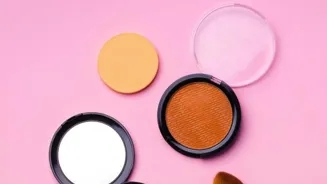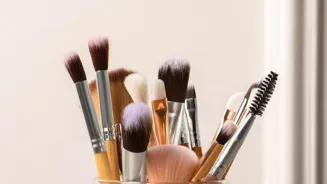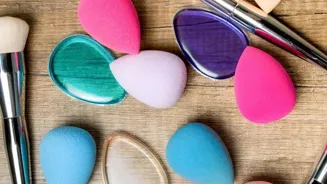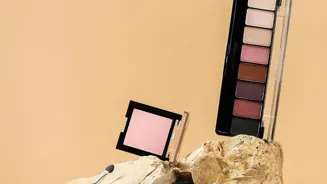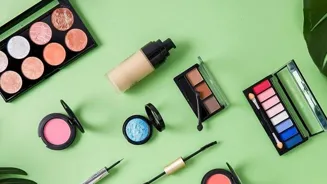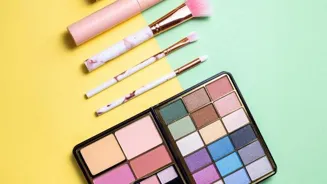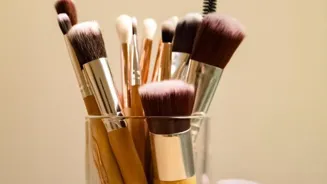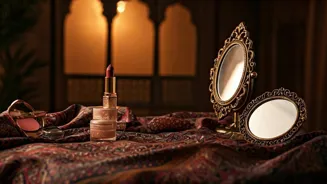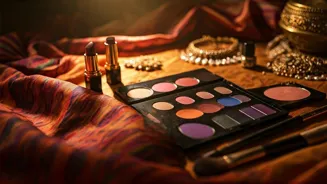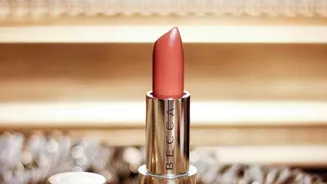Unlock the secrets of flawless makeup with the art of contouring! Enhance your features effortlessly by mastering this technique. Read on to discover how to sculpt and define your face like a pro
In the
ever-evolving world of beauty and makeup, certain techniques stand the test of time, securing their place as essentials in every makeup enthusiast’s arsenal. One such technique is contouring.
This isn’t just about slapping on some dark powder; it’s an art form, a way to sculpt and define your face, bringing out your best features and subtly minimizing others.
Think of it as playing with light and shadow to create the illusion of higher cheekbones, a slimmer nose, or a more defined jawline. Contouring, when done right, can make a noticeable difference without looking overly dramatic.
It's about enhancing what you already have, rather than completely changing your appearance. Whether you're a seasoned makeup pro or just starting out, understanding the basics of contouring can elevate your makeup game significantly. So, let's dive in and demystify this popular technique.
Contouring creates shadows, highlighting adds light for facial definition
Contouring involves strategically applying a shade darker than your skin tone to create shadows. These shadows give the illusion of depth and definition. Highlighting, on the other hand, uses a lighter shade to bring areas forward, emphasizing them by catching the light.
Imagine a sculptor chiseling away at a block of stone; contouring is like creating the shadows that define the shape, while highlighting brings out the prominent areas. The key is to understand your face shape and identify the areas where shadows naturally occur.
This will guide you in placing your contour and highlight correctly. For instance, if you want to create the illusion of higher cheekbones, you would apply contour in the hollows of your cheeks, just below the cheekbone, and highlight above the cheekbone to make it pop.
Similarly, to slim the nose, you would apply contour down the sides of the nose and highlight down the bridge. It's all about creating a balance between light and shadow to achieve the desired effect, enhancing your natural features.
Choosing the right products for flawless contouring
Choosing the right products is crucial for achieving a flawless contour. Powders are generally easier to blend for beginners, while creams offer more intensity and a dewy finish. When selecting a contour shade, opt for something that is two to three shades darker than your natural skin tone.
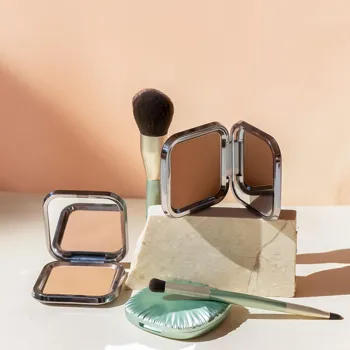
Avoid shades that are too orange or red, as they can look unnatural. Instead, look for cool-toned browns that mimic the appearance of natural shadows. For highlighting, choose a shade that is slightly lighter than your skin tone with a subtle shimmer or matte finish, depending on your preference.
Matte highlights are more natural, while shimmery highlights add a glow. The tools you use are just as important. A good angled brush is perfect for applying contour to the cheeks and jawline, while a smaller, tapered brush works well for contouring the nose.
A fluffy brush is ideal for blending out the product to avoid harsh lines. Experiment with different formulas and tools to find what works best for your skin type and makeup style.
Identify face shape for tailored contouring technique
Before you grab your contour brush, take a good look at your face in the mirror. Identifying your face shape – whether it's round, oval, square, heart-shaped, or something in between – is the first step in customizing your contour.
For instance, if you have a round face, your goal might be to add definition and create the illusion of more angles. In that case, you would focus on contouring along the sides of your forehead, under your cheekbones, and along your jawline to create more structure.
On the other hand, if you have a square face, softening the angles is key. You would apply contour to the corners of your forehead and along the jawline to round out the face. Knowing your face shape is not about making radical changes, but enhancing your natural bone structure.
Once you determine your face shape, you can tailor your contouring technique to best suit your features. Remember, practice makes perfect, so don't be afraid to experiment.
Applying contour correctly enhances features naturally. Blend seamlessly for a subtle shadow
Applying contour correctly is essential to avoid a muddy or unnatural look. Start by applying a small amount of product and gradually build up the intensity. Remember, it's easier to add more than to take away.
Focus on the areas where shadows naturally occur: under the cheekbones, along the hairline, on the sides of the nose, and along the jawline. When contouring the cheeks, start at the ear and blend towards the corner of your mouth, stopping about two fingers away from your lips.
For the nose, apply a thin line of contour down each side of the bridge, blending carefully to avoid harsh lines. To define the jawline, apply contour along the underside of the jaw, blending downwards towards the neck. Blending is key to a seamless finish.
Use a clean, fluffy brush to blend the contour into your skin, ensuring there are no visible lines. The goal is to create a subtle shadow that enhances your features, not a stark line of color.
Contouring, highlighting, and blending elevate makeup game
Contouring is a powerful tool, but it's just one part of the makeup puzzle. Pairing it with highlighting and blending it all together seamlessly is what takes your makeup from good to great. Highlighting emphasizes the high points of your face, bringing them forward and creating a luminous glow.
Apply highlighter to the tops of your cheekbones, down the bridge of your nose, on your cupid's bow, and in the inner corners of your eyes. The key is to use a light hand and blend well to avoid a streaky or unnatural look.
Once you've applied contour and highlight, use a setting powder to lock everything in place and prevent creasing. Focus on areas that tend to get oily, such as the T-zone. A light dusting of setting powder will help to blur imperfections and create a smooth, flawless finish.
Remember, makeup is all about enhancing your natural beauty and having fun. Experiment with different techniques and find what works best for you. With practice, you'll master the art of contouring and elevate your makeup game in no time.
